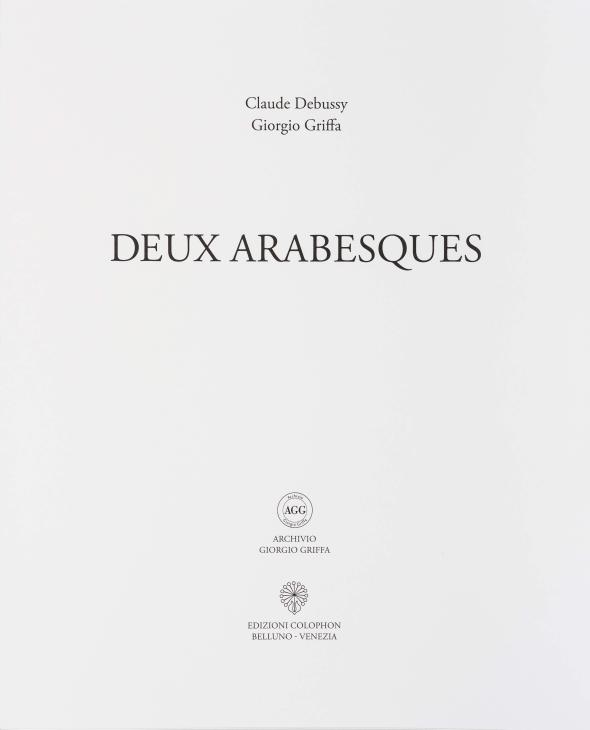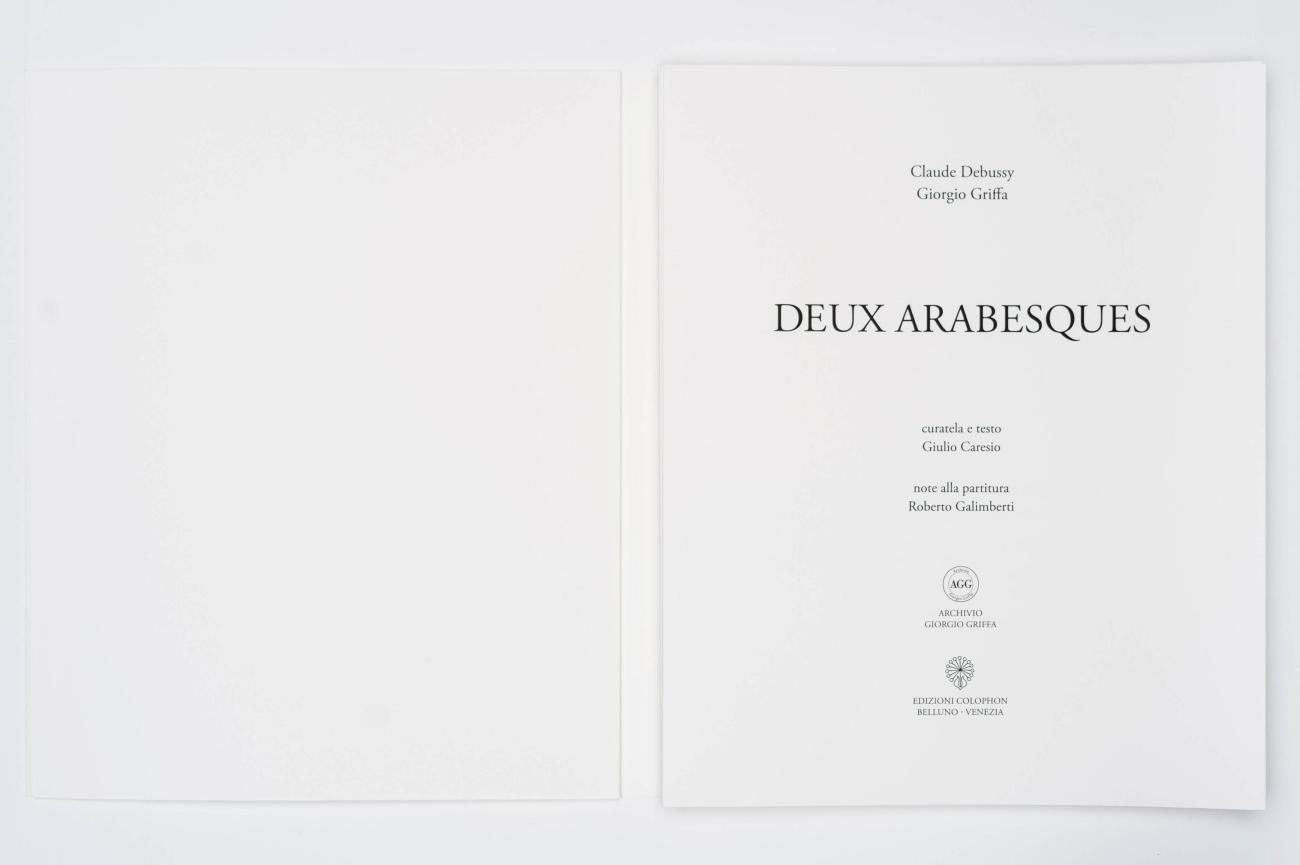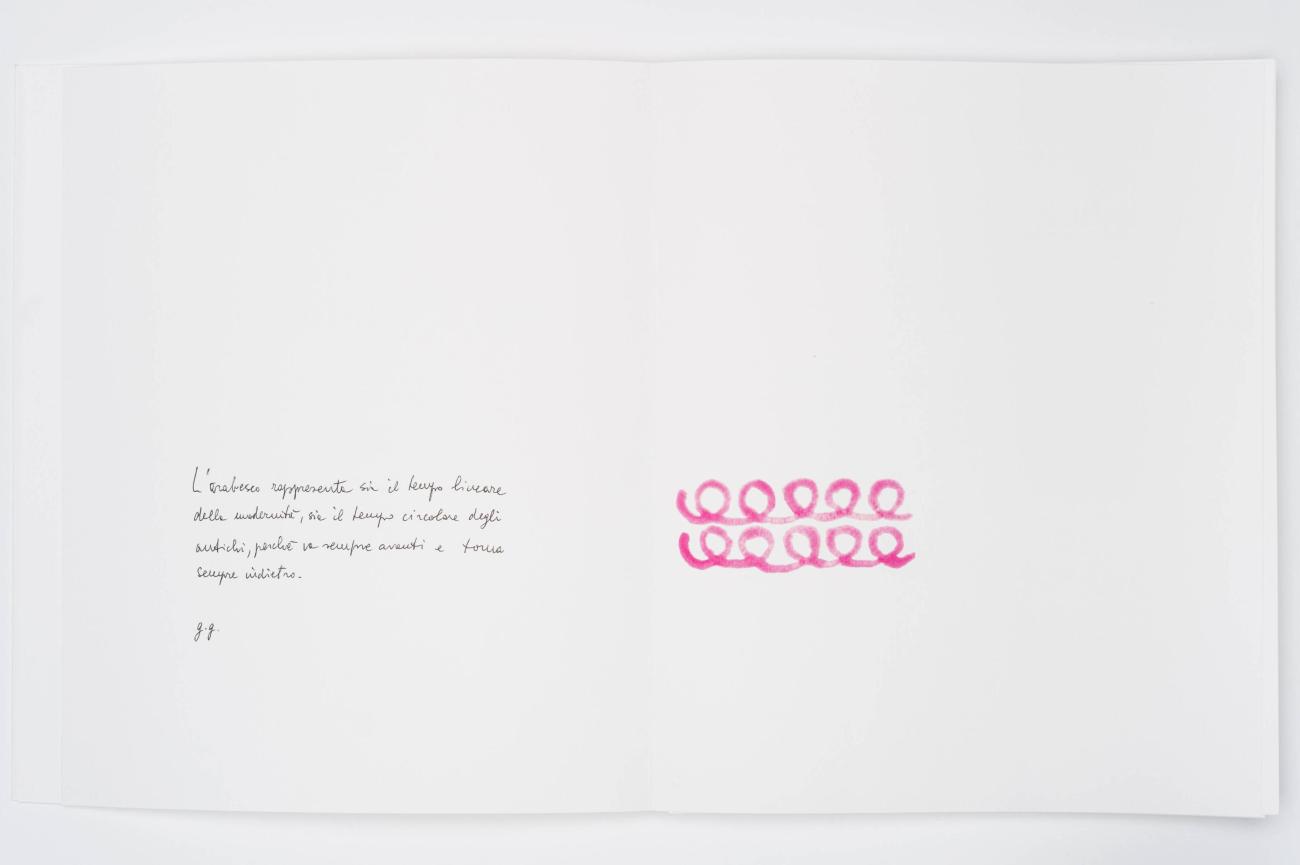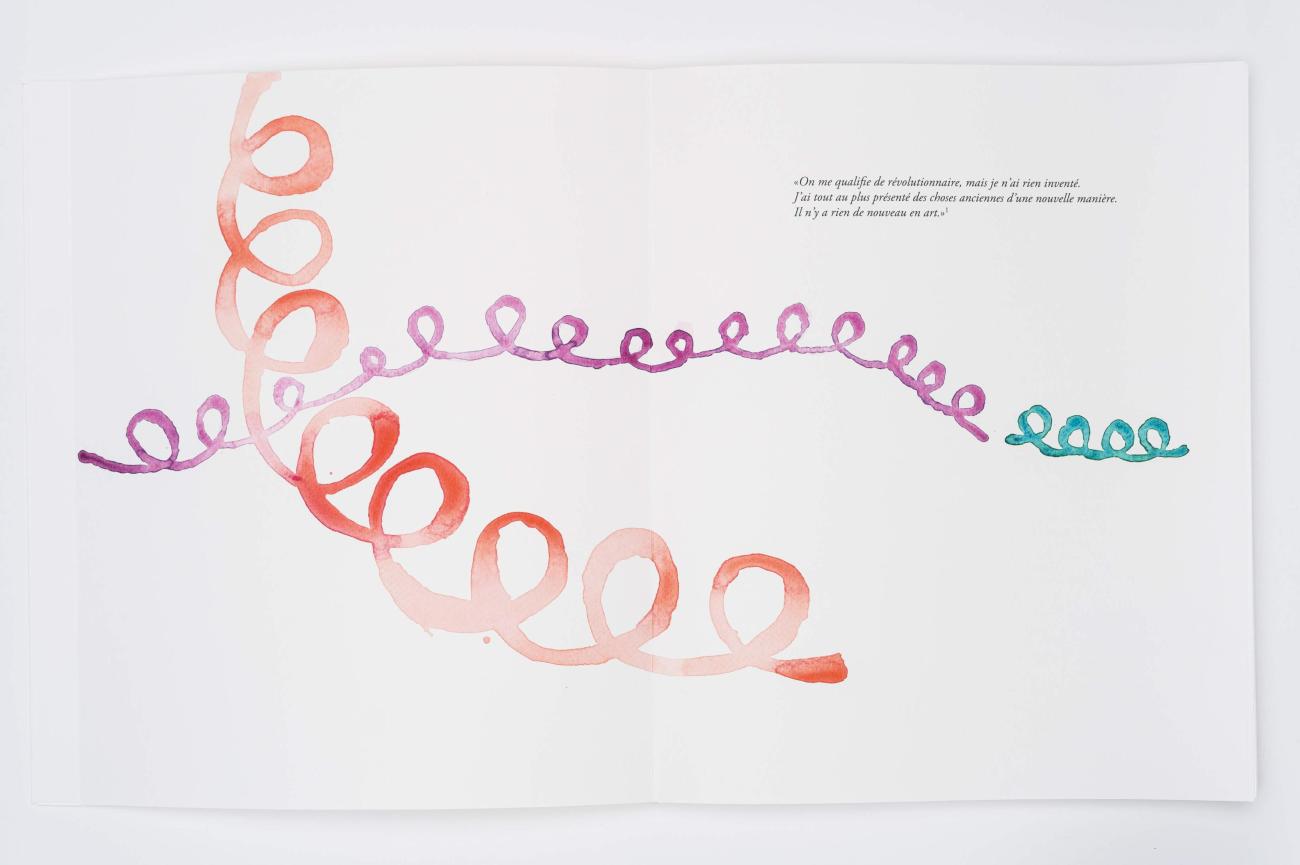
Artist’s book pairing 11 watercolour plates specially created by Giorgio Griffa with an equal number of selected quotes from the writings of Claude Debussy. The selection is curated by Giulio Caresio, who also authored the accompanying text, unfolding between one image and the next to open glimpses and trace connections that outline a parallel between the art and thought of these two great masters.
The second part of the book features a faithful reproduction of Debussy’s original manuscript of the Deux Arabesques, enriched by Roberto Galimberti’s original, insightful annotations—expanding this dialogue through the attentive eye of a musician reading the score.
Excerpts from the curators’ texts
The purity of a piano solo conjuring up graceful arpeggios and crystal-clear notes evokes beauty in its simplest and most direct forms, making it impossible for me not to think of how less is more and of the signs on Giorgio Griffa’s canvases, as they play and engage with each other.
The arabesque in music was especially loved by Debussy. In his Deux Arabesques, he elevates it to the central theme—no longer an ornamental frill, but the leading voice, creating melodies that curl and unwind, combining circularity and linearity as they swirl through time and space.
Giorgio’s primary signs see the light as individual marks, dots, and lines in a musical alphabet. Interacting, they combine and curl, dilating to form chords, patterns, arabesques, and color fields. They generate rhythms and harmonies in which linear and circular time, space and hierarchy, all play a key role.
It is a parallel that opens up a vast terrain of connections, which I believe are worth exploring.
Giulio Caresio
A score is not the music, it is the thought of music.
Knowing how to engage with the sign—the text in relation to the context—is part of the act of interpreting music, which comes before the gesture, before playing a sound.
A manuscript often reveals aspects that printed editions do not convey—not objective instructions, but intentions, graphic details, and signs, which go beyond the symbols in the space delimited by the sheet and its lines.
Taking our cue from Claude Debussy’s manuscript of Deux Arabesques, held by the library of the Conservatoire de Paris, here are some small notes tied—terms hanging in the balance—to Giorgio Griffa’s work and Giulio Caresio’s commentary on Arabesque.
Roberto Galimberti


